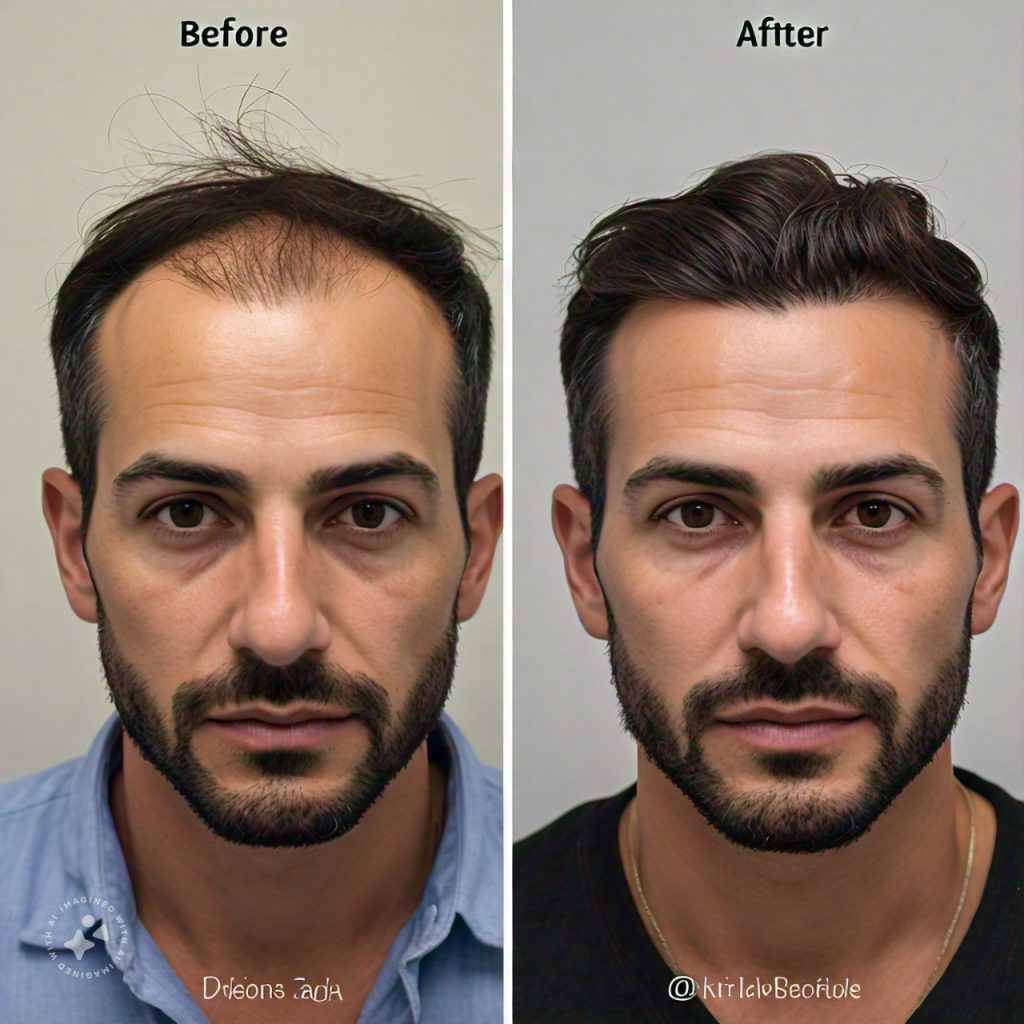Hair transplants have become a popular and effective solution for individuals dealing with hair loss. However, understanding the hair growth cycles after the procedure is essential to set realistic expectations and monitor progress. Here, we delve into the phases of hair growth and how they relate to post-transplant recovery.

The Basics of Hair Growth Cycles
Human hair grows in cycles, and these cycles play a crucial role in determining the outcome of a hair transplant. The hair growth cycle comprises three main phases:
- Anagen Phase (Growth Phase)
This is the active phase where the hair follicle produces new hair. It lasts between two to seven years and determines the length of the hair. - Catagen Phase (Transitional Phase)
This brief phase, lasting about two weeks, signals the end of the active growth period. The hair follicle shrinks, and the hair detaches from the blood supply. - Telogen Phase (Resting Phase)
During this phase, which lasts around three to four months, the hair follicle remains dormant. At the end of this period, the hair sheds, making way for new growth.
What Happens After a Hair Transplant?
After a hair transplant from Best hair transplant UK , the transplanted hair follicles undergo the same growth cycles as natural hair. However, the process might initially seem different due to the trauma experienced by the scalp during surgery. Here’s a breakdown of the typical timeline:
- First Week: Initial Healing
The transplanted area will exhibit redness, swelling, and scabbing. Patients are advised to follow post-operative care instructions to ensure proper healing. Hair follicles remain intact, but the hair shafts may appear brittle. - 2–3 Weeks: Shedding Phase
It’s common for the transplanted hairs to fall out during this period. This shedding, known as “shock loss,” is entirely normal and occurs because the hair follicles temporarily enter the telogen phase. - 1–3 Months: Dormancy Phase
The scalp appears relatively unchanged as the hair follicles rest. While this phase can be frustrating, patience is key, as it’s a natural part of the hair growth cycle. - 4–6 Months: Early Growth Phase
New hair starts to emerge as the follicles transition to the anagen phase. Initially, the hair may be thin and fine, but it will thicken over time. - 9–12 Months: Visible Results
By this stage, most patients notice significant improvement. The hair continues to grow and blend naturally with existing hair. Any patchiness observed earlier typically resolves as growth stabilizes. - 12–18 Months: Full Growth Cycle
The final results become evident as the hair reaches its maximum density and length. The transplanted hair behaves like natural hair and can be styled as desired.
Factors Influencing Hair Growth After a Transplant
Several factors affect the success of a hair transplant and the subsequent hair growth cycle, including:
- Quality of the Donor Hair
Hair from the donor area should be healthy and resilient to ensure successful transplantation. - Skill of the Surgeon
An experienced surgeon ensures precise placement of follicles, which impacts the density and direction of growth. - Post-Operative Care
Proper scalp care, avoiding harsh treatments, and adhering to medical advice significantly influence the recovery process. - Individual Hair Growth Characteristics
Genetics and hair type play a role in how quickly and densely hair regrows.
Tips for Supporting Healthy Hair Growth
To maximize the success of your hair transplant, consider these tips:
- Follow Your Surgeon’s Instructions
Adhere to recommended care routines, including cleaning, moisturizing, and avoiding direct sunlight on the scalp. - Maintain a Healthy Diet
Nutrient-rich foods, particularly those high in protein, vitamins, and minerals, promote healthy hair growth. - Avoid Smoking and Alcohol
These habits can impair blood circulation and slow the healing process. - Be Patient
Understanding that hair growth takes time will help you stay optimistic throughout the process.
Conclusion
Hair growth after a transplant is a gradual process influenced by natural growth cycles and individual factors. By understanding these cycles, you can set realistic expectations and care for your transplanted hair effectively. Remember, patience and consistent care are key to achieving optimal, long-lasting results.
We are located in Brighton and Hove, proudly serves the nearby areas. Capital Hair Restoration – Hair Transplant is a leading provider of surgical and non-surgical hair loss solutions for men and women throughout Brighton, the UK, and Ireland. Browse our site ( Brighton Hair Transplant ) or call us ( 020 8088 2393 ) for a chat.

